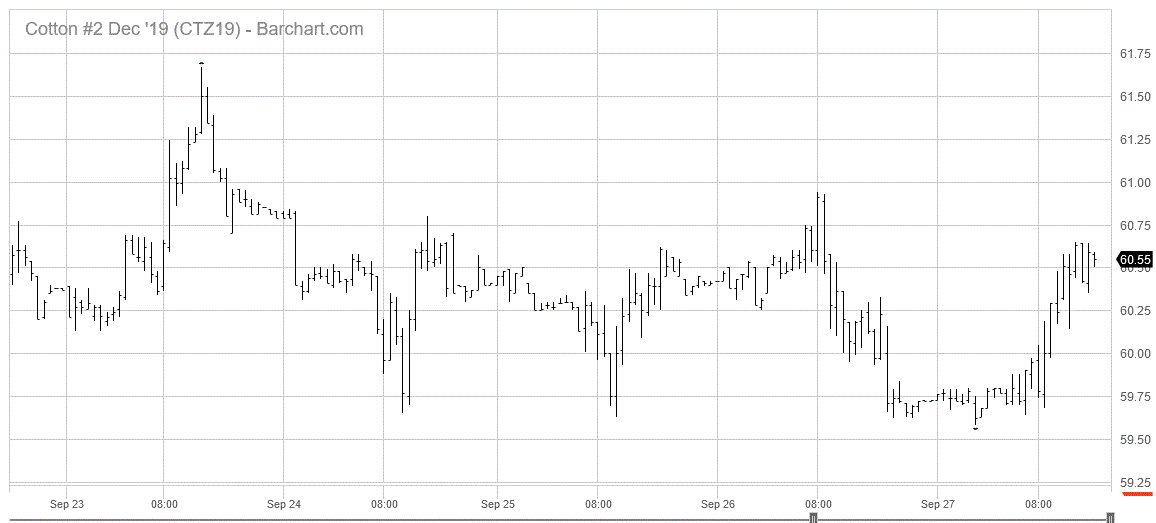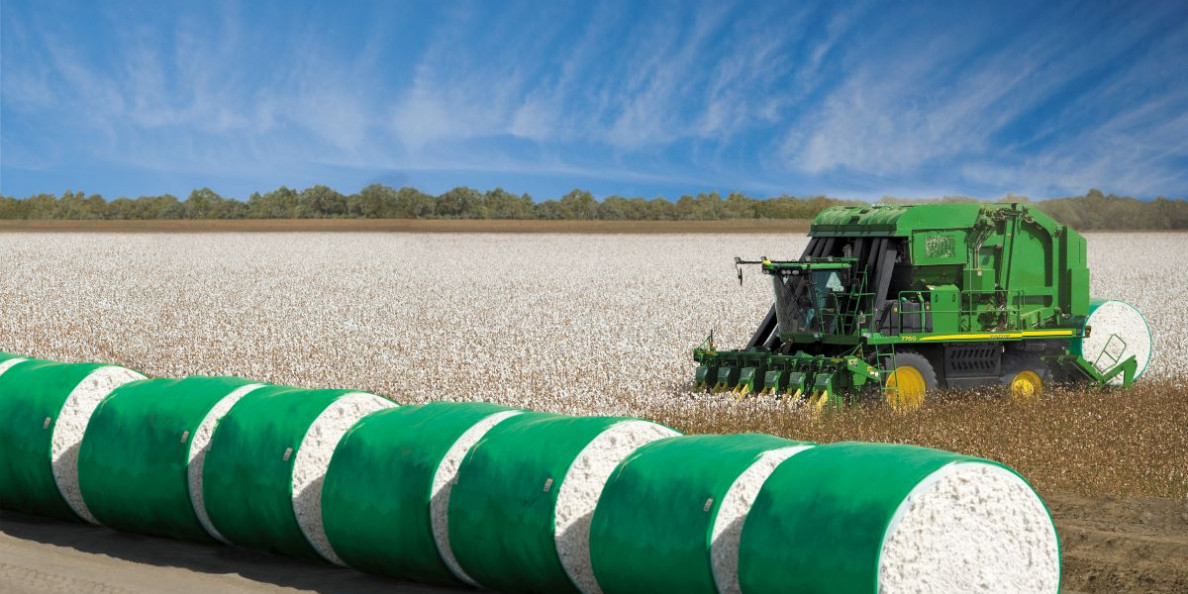The week ending Friday, September 27 saw ICE cotton futures trade in a narrow, sideways pattern. Fundamental news this week included an improved, albeit unexceptional, export sales report, continuing erosion of crop condition ratings, and an unwelcome rainy long range forecast for the southern plains region.

On Friday, September 27, the Dec’19 and Jul’20 ICE cotton futures contracts settled at 60.90 and 61.63 cents per pound, respectively, while the new crop Dec’20 settled at 63.81. A sampling of old crop options reflects the modest decline in old crop futures over the last few weeks. For example, an out-of-the-money 65 cent Jul’20 call option traded for 3.61 cents per pound on September 12 when futures were higher, but this same option was only worth 3.15 cents per pound on September 26. Likewise, a deep in-the-money 75 put option on Dec’19 got a little more valuable this week, settling September 26 at 14.82 cents per pound. Chinese and world cotton prices trended lower this week.
These last several months provide a ongoing example of market volatility. It can happen in both directions. For example, an unexpected resolution to U.S.-China trade relations, or an unexpected downshift in yield expectations, or a hurricane, or something else totally unexpected could trigger another short covering rally. If that happens, I would view such a rally as a selling/hedging opportunity since 1) spec driven rallies tend to be short lived, 2) I would expect a lot of contracting and hedging in the mid/upper 60s, including 3) merchants who have already contracted and will probably do some needed hedge selling.
The only thing known with certainty is that nobody ultimately knows the direction of prices. Therefore the most relevant question is always whether a cash contract or a hedge on today’s futures price will be a profitable, or at least survivable, price floor.


